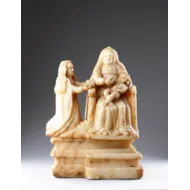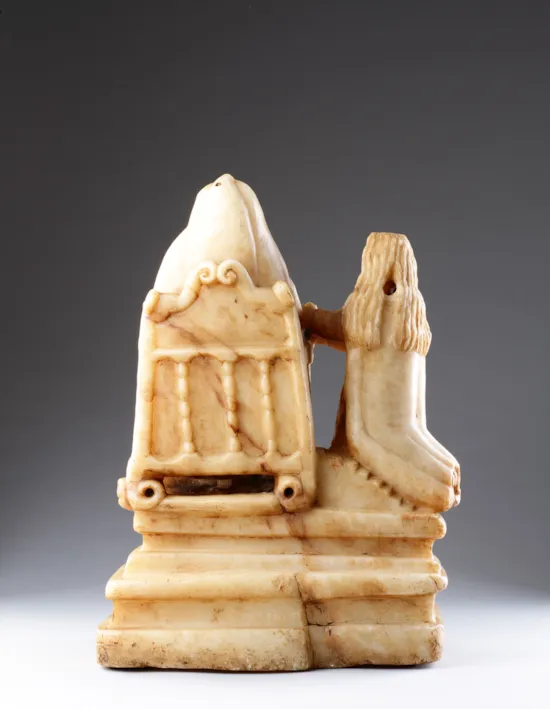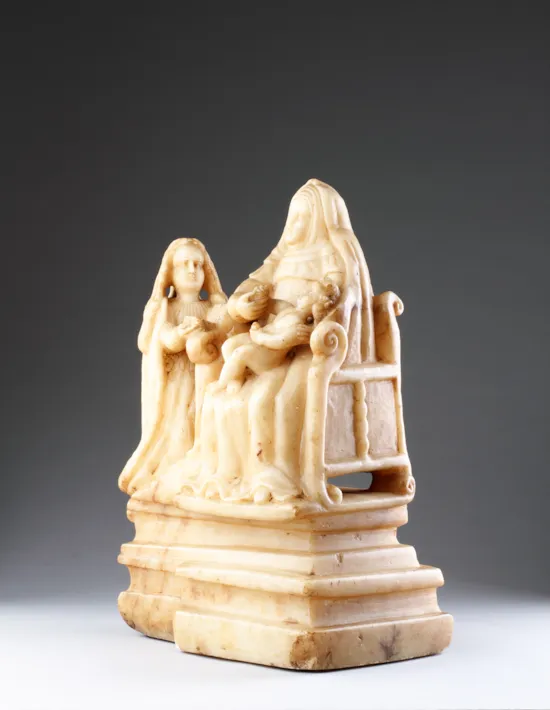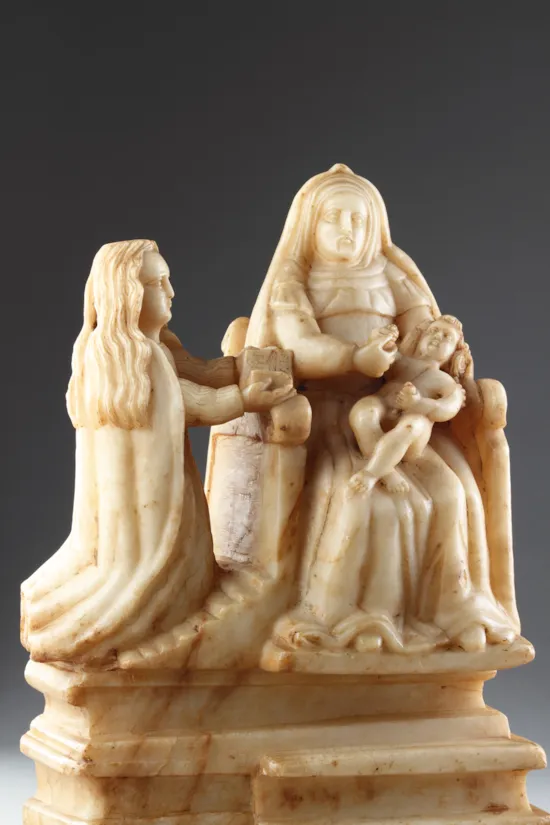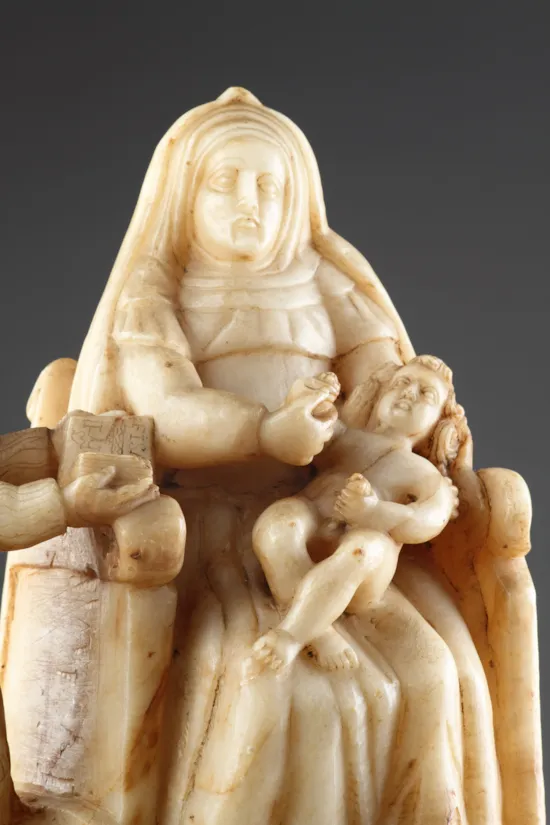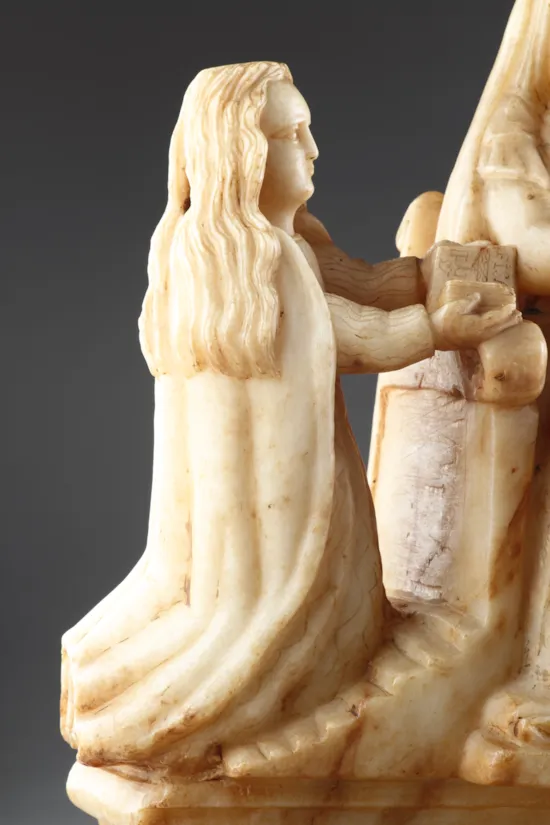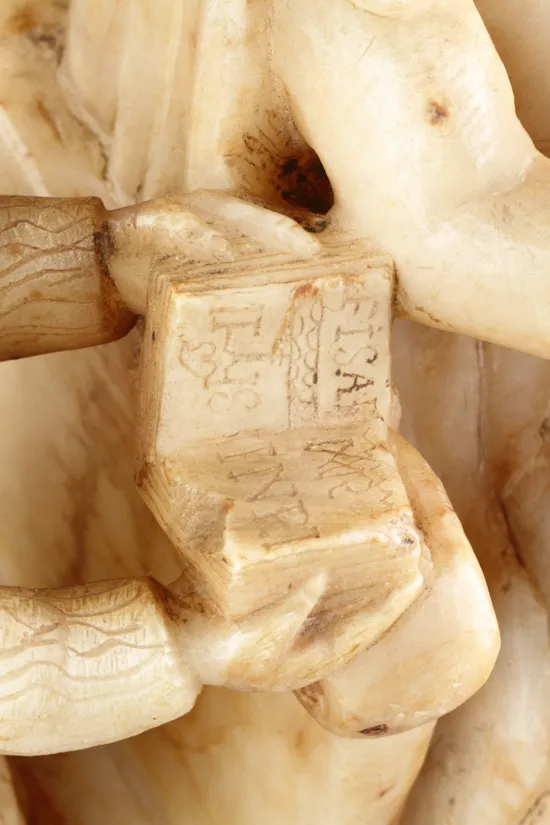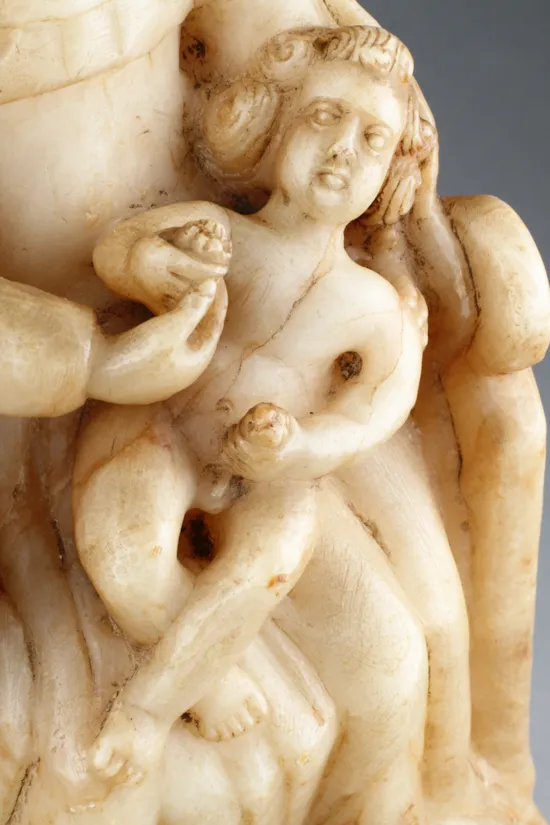Sicilian Trapani Baroque Carved Alabaster Group Depicting Saint Anne Seated on a Throne with the Young Virgin and Christ Child
A Sicilian Trapani Baroque Carved Alabaster Group Depicting Saint Anne Seated on a Throne with the Young Virgin Kneeling at Her Side Reading from an Open Book Inscribed: ‘FISA . IHS ♡ MAR . INRI’
The Christ Child seated on Her Mothers Lap holding a Rose
Apertures to the top of their heads for silver crowns
17th Century
Size: 41cm high, 29cm wide, 18.5cm deep - 16 ins high, 11½ ins wide, 7¼ deep
The Christ Child seated on Her Mothers Lap holding a Rose
Apertures to the top of their heads for silver crowns
17th Century
Size: 41cm high, 29cm wide, 18.5cm deep - 16 ins high, 11½ ins wide, 7¼ deep
A Sicilian Trapani Baroque Carved Alabaster Group Depicting Saint Anne Seated on a Throne with the Young Virgin Kneeling at Her Side Reading from an Open Book Inscribed: ‘FISA . IHS ♡ MAR . INRI’
The Christ Child seated on Her Mothers Lap holding a Rose
Apertures to the top of their heads for silver crowns
17th Century
Size: 41cm high, 29cm wide, 18.5cm deep - 16 ins high, 11½ ins wide, 7¼ deep
The Christ Child seated on Her Mothers Lap holding a Rose
Apertures to the top of their heads for silver crowns
17th Century
Size: 41cm high, 29cm wide, 18.5cm deep - 16 ins high, 11½ ins wide, 7¼ deep
So varied and wide ranging was the output of Sicilian baroque art and architecture that it defies characterisation. The phrase groups together all kinds of distinct styles that have little in common with one another because most of the island was divided into feudal boroughs ruled by Lords and Barons who individually determined the art and architecture of their buildings and churches.
This alabaster group sometimes known as the ‘Saint Anne Trinity’ comprises three generations; St Anne, her daughter Mary and her grandchild, Jesus. In 1481 St Anne was included in the Roman Church calendar and her popularity and cult as a fashionable saint increased. This step was also intended to support the dogma of Mary’s immaculate conception, which means she was free of sin from the moment she was conceived. The belief in St Anne’s power of intercession was so great that some clergy feared her cult would eclipse that of the Virgin. The Reformation marked the beginning of a decline from which Saint Anne never recovered.
This alabaster group sometimes known as the ‘Saint Anne Trinity’ comprises three generations; St Anne, her daughter Mary and her grandchild, Jesus. In 1481 St Anne was included in the Roman Church calendar and her popularity and cult as a fashionable saint increased. This step was also intended to support the dogma of Mary’s immaculate conception, which means she was free of sin from the moment she was conceived. The belief in St Anne’s power of intercession was so great that some clergy feared her cult would eclipse that of the Virgin. The Reformation marked the beginning of a decline from which Saint Anne never recovered.
Ex Private Suffolk collection
Sicilian Trapani Baroque Carved Alabaster Group Depicting Saint Anne Seated on a Throne with the Young Virgin and Christ Child
